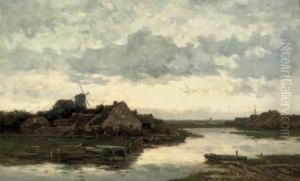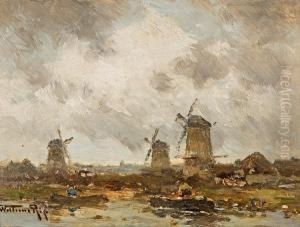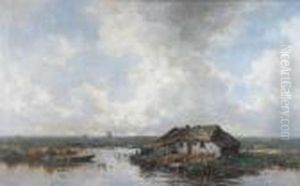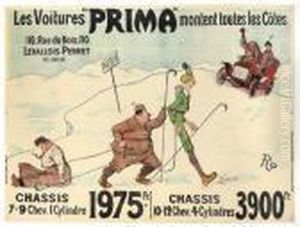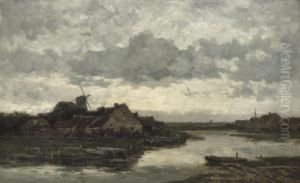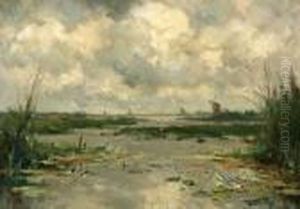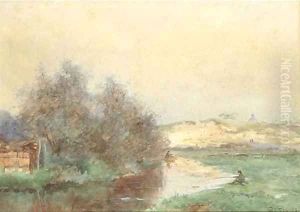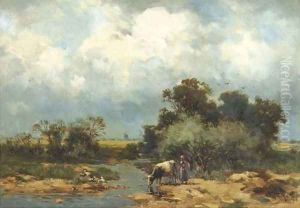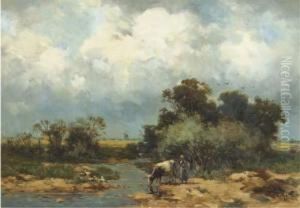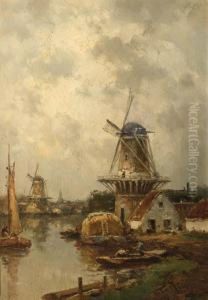Willem Cornelis Rip Paintings
Willem Cornelis Rip was a Dutch artist born on June 11, 1856, in the Netherlands. He is best known for his landscape paintings that captured the serene and pastoral beauty of the Dutch countryside. His works often reflected the traditional Dutch style of the 17th century, and he was particularly skilled in depicting the interplay of light and shadow, a technique that gave his paintings a tranquil and atmospheric quality.
Rip began his artistic training at a young age and was initially taught by his father, who was also a painter. He later attended the Royal Academy of Art in The Hague, where he further developed his skills and became influenced by the Hague School of painters, a group known for their realistic depictions of rural scenes.
Throughout his career, Rip remained devoted to the landscape genre and frequently painted the areas around The Hague and the Dutch province of Gelderland. His work was characterized by a subtle use of color and a focus on the natural beauty of the environment. He captured various seasons and times of day in his paintings, showing a particular fondness for the calmness of early morning and twilight scenes.
Rip's paintings were well-received during his lifetime, and he exhibited his work at various art shows and galleries throughout the Netherlands. Despite his success, he remained a modest artist, dedicated to his craft and the portrayal of the Dutch landscape.
Willem Cornelis Rip passed away on October 18, 1922. Today, his paintings can be found in several Dutch museums and are appreciated for their peaceful and idyllic representation of the Netherlands' rural heritage. His work continues to be celebrated for its contribution to the Dutch landscape painting tradition and for its ability to evoke a sense of nostalgia and tranquility in the viewer.
